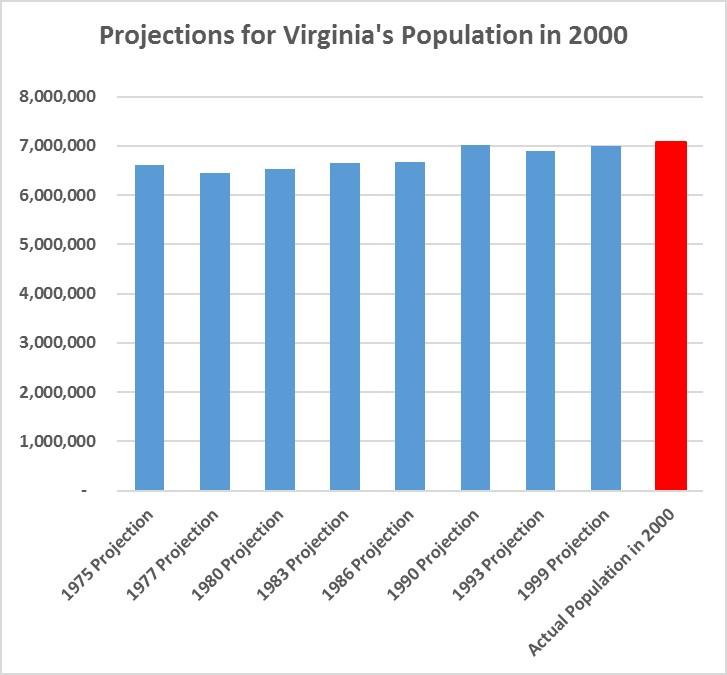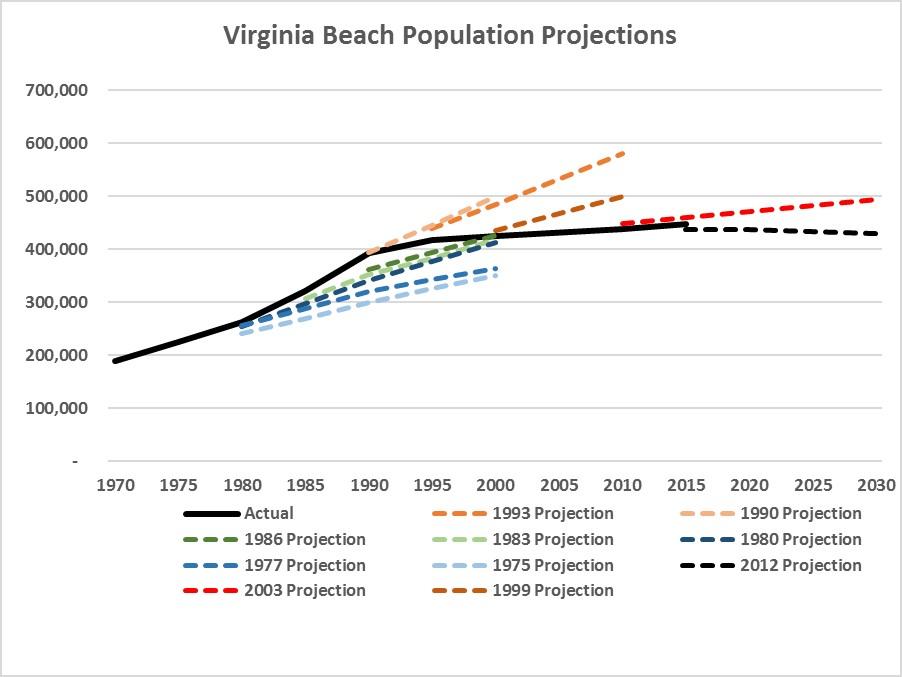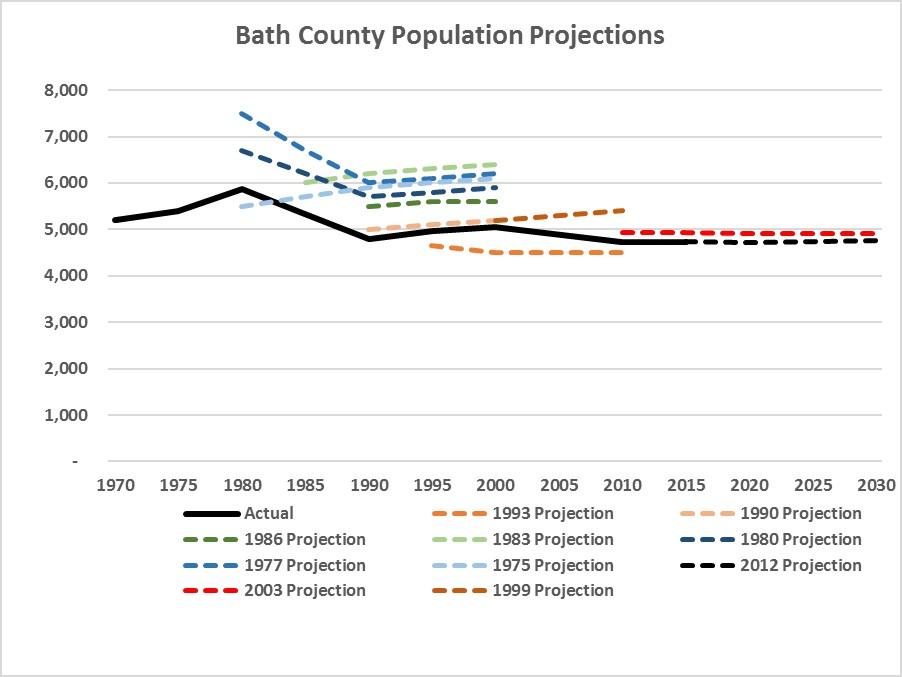How accurate are population projections?

Forecasting weather accurately is rarely possible but the public counts on exactly that – an accurate prediction. And the combination doesn’t always work out well as illustrated in the 2005 film, The Weather Man, when Nicholas Cage, who plays a meteorologist, sometimes gets the weather forecast wrong and is pelted with half-consumed fast food by angry viewers who don’t understand the complexity of forecasting.
Forecasting population change, like forecasting the weather, is complex, requires one to make assumptions about the future, often based on past trends, and is rarely spot on. Because population projections are less familiar to the public, projections are often treated as something closer to a fact, rather than a forecast that can and likely will change. Unfortunately, not understanding population projections can lead to much larger problems than a rained out barbecue.
Every population projection has a margin of error, just like weather forecasts do. The most commonly accepted margin of error for 10-year population projections at county level is 12 percent. The equivalent in weather forecasting would be calling for a 75 degree day around the end of the week with a 9 degree margin of error, meaning that the actual temperature is likely to be between 66 and 84 degrees. A longer term forecast usually has a considerably higher margin of error; average county-level population projections for 30 years out is expected to be more than 30 percent.
If you can look into the seeds of time
Fortunately, both weather forecasts and population projections typically become more reliable the closer they are to the date of the forecast. In Virginia, for example, between 1975 and 1999, the Virginia Employment Commission produced a series of projections for the Commonwealth’s population in 2000, which were updated every few years. As can be seen below, projections produced closer to 2000 were generally more accurate than older projections since they incorporated more recent demographic trends.

While the accuracy for projections at state level is generally pretty good, projections at the locality level tend to be much more volatile. In Virginia Beach, the largest city in the state, population projections were unable to account for the significant drop-off in Virginia Beach’s growth during the 1990s. Because the population projections continued to rely on Virginia Beach’s strong growth prior to 1990, the projected populations for 2000 and 2010 were much higher than Virginia Beach’s actual population in either year.

In Bath County, on Virginia’s rural western border, the population projections struggled to account for the temporary influx of workers who moved into the small county to build its hydroelectric power plant between 1977 and 1985. Because of the temporary rise in Bath County’s population, the projections expected the county’s population to keep growing, even after the 1990 census showed that most of the power plant construction workers had left.

In general, population projections are more accurate for large populations than for small populations (the margin of error is smaller for states than most counties), and more accurate for the near future than the distant future. The odds of being 100 percent accurate are extraordinarily low. Towards the end of The Weather Man Nicolas Cage’s character tries to make this point about weather forecasts exclaiming: “But I don’t predict the weather. Nobody does, ’cause i-it’s just wind. It’s wind. It blows all over the place!” Anyone who is making plans based off a weather forecast or a population projection has to keep in mind that the actual weather or population will seldom be exactly what was predicted.


